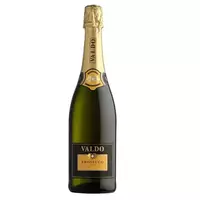Prosecco wine (prosecco)

The Italian variety of Prosecco or Prosecco sparkling dry wine can be attributed to the list of the most popular drinks not only in their homeland, but also around the world. It is worth noting that Prosecco wine is used not only as a standalone drink, but also as an ingredient in cocktails. For example, the classic recipe for the famous Bellini cocktail involves the use of Prosecco sparkling wine, as well as peach puree.
Prosecco sparkling wine is made from a special grape called Glera or Prosecco. In addition, the wine can be made from a mixture of several varieties of high-quality grapes, for example Bianchetta, Verdizo, as well as Perera. Currently, Prosecco wine is produced in 9 regions of Italy. Often, it is Italian sparkling wine Prosecco that is used as an alternative to the more expensive French champagne.
The history of the modern Prosecco species began in the 1960s. When the technology for producing the drink was revised. Initially, Prosecco wine was practically no different from the sweet Asti Spumante, which was produced in Piedmont. After improving the technological process of Prosecco wine production, the drink became a dry sparkling wine.
Such changes had a positive effect on the popularity of the drink among consumers. Currently, various types of Prosecco are in stable demand due to their taste and consumer characteristics, as well as the affordable price of the drink. Prosecco wine differs from champagne not only in its main characteristics, but also in its production method.
Prosecco species
In the manufacture of Prosecco wine, the so-called Sharma method is used, which involves the secondary fermentation of the drink in special tanks made of stainless steel. Among all types of Prosecco wine produced in Italy, you can distinguish such the most popular and popular varieties of the drink as:
Prosecco Spumante sparkling wine;
weakly carbonated Prosecco wine Fridzante;
Prosecco Gentile wine;
Prosecco Spumante wine.
In addition, Prosecco is classified according to the percentage of sugar in the composition of the drink by:
Prosecco wine brut contains 15 grams of sugar in a liter of drink;
Prosecco dry wine contains 35 grams of sugar in a liter of drink;
Prosecco extra wine contains 20 grams of sugar in a liter of drink.
In Italian tradition and culture, Prosecco is called a drink "for all occasions. " Elsewhere, Prosecco wine is often served at the table as an aperitif, as well as a champagne replacement. Like other types of sparkling wine, Prosecco is served chilled to the table.
Unlike champagne, Prosecco wine is recommended to be consumed in a "young" form, i. e. the drink must be no older than two years. Otherwise, Prosecco wine is considered "old" and has lost its distinctive taste, as well as consumer characteristics. Prosecco wine differs from other sparkling wines with a fairly low level of alcohol, only 12%. Professional tasters note that Prosecco's bouquet of flavors and flavors stand out with fresh floral flavors of apple, peach and pear.
Unlike champagne, Prosecco sparkling wine is distinguished by the brightness of the primary aromas. Wine stands out for its relatively simple and uncomplicated taste. As mentioned earlier, Prosecco is also used as an independent drink and as an ingredient in cocktails such as Bellini, Spritz, Mimosa, and Sgroppino.
prosecco wine (prosecco) 75 kCal
Energy value wine prosecco (Ratio of proteins, fats, carbohydrates - ju):
Proteins: 0.3 g (~ 1 kCal)
Fats: 0 g (~ 0 kCal)
Carbohydrates: 1.5 g (~ 6 kCal)
Energy ratio (bj | y): 2% | 0% | 8%
 Español
Español Français
Français Português
Português Русский
Русский 简体中文
简体中文 繁體中文
繁體中文 日本語
日本語 한국어
한국어 العربية
العربية Türkçe
Türkçe Қазақ
Қазақ Deutsch
Deutsch Italiano
Italiano Українська
Українська
